Welcome to another installment of Show Us Your Space—a series in which we ask musicians and producers to share their recording studios and other music-making environments. Two weeks ago, we explored the beautiful rooms of Influx Studios, nestled in the majestic and Medieval town of Bern, Switzerland.
This week, we’re heading over 10,000 miles southeast to Sydney, Australia, to tour Enmore Audio. As part of its operation, Enmore also maintains a blog about recording and gear. In fact, one of their editors recently submitted a post to Reverb about the DIY studios of Australia's pysch scene, which you can check out for even more inspiring studio pics.
Read below as co-owner and engineer Dan Shaw walks us through the beautiful, gear-lined confines of Enmore Audio.
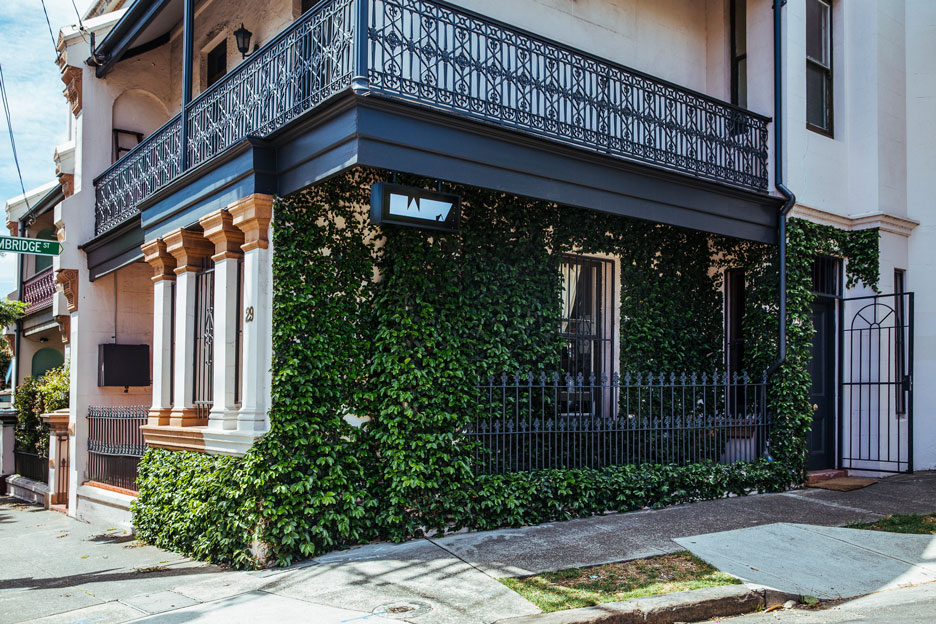
Welcome to Enmore Audio, located in the inner west of Sydney. I co-own the studio with Radi Safi, and we’ve been making music as Circle for around ten years now. The early part of the band’s career was based around recording and producing in a living room, so the idea of putting together a proper studio and opening it up to collaborations with other artists seemed like a natural next step.
The studio was carved out of the ground floor of a Victorian-era terrace. The site of the studio was originally a place to keep horses, which inspired the naming of one of the live rooms: The Stable. The other, bigger live space is The Garden, and the control room, where most stuff happens, is called The Kitchen.
The three spaces are cozy and geared toward having instruments within arm’s reach. Drum kits, percussion, guitars—even the old Hammond can be fired up and tracked quickly without disrupting the flow of a session. And when we do put the mics up, we’re confident that it’s going to sound great. The studio was designed by one of the best acousticians in Australia, John Sayers. All of the spaces have a tight and focused sound, which gives us control and creative options.
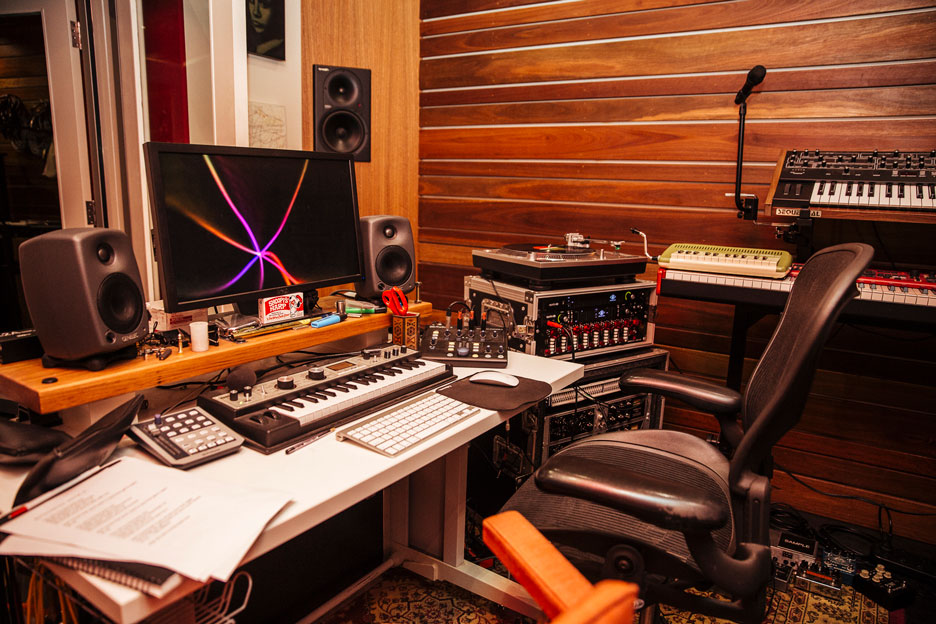
The nerve centre of our studio is the Pro Tools rig, but we’ve got a couple of extra recording tools that can inject some spice into a session. We acquired an Otari MTR-10 from the ABC, which they used for mastering. It’s a two-track, so not so practical for multitrack recording, but it’s great for mastering or adding a bit of tape compression to a drum stem.
The Tascam 4-track is another story altogether. I started using this for recording experiments at home, and it quickly found a spot in the control room at Enmore Audio. Warble, varispeed effects, and just downright nasty noise is what this thing does best. I feel like everyone has one of these, and so they should.
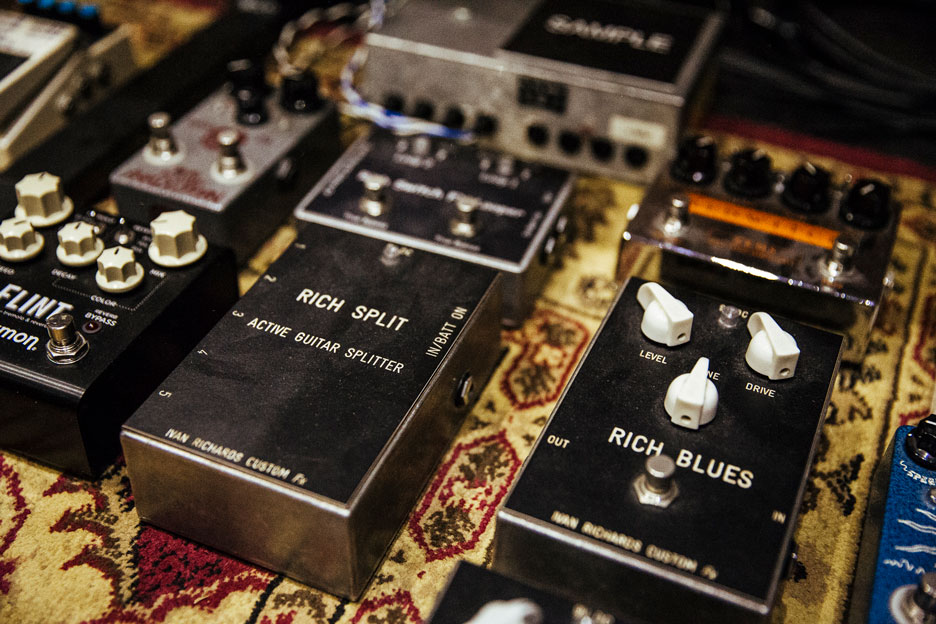
We love our stompboxes, too. Like any self-respecting guitar nerds, we’ve accrued way too many over the years. A few that are especially notable for their juiciness include the Analogman Bi-Chorus and Compresser, the Diamond Bass Comp, the Strymon Flint, and the Ivan Richards Fuzz and Blues pedals.
A special shoutout needs to go to the Zeus octave and fuzz from New Zealand pedal masters Red Witch. It has a “sputter” control, which makes the whole thing crazily unpredictable and cool… if you can control it.
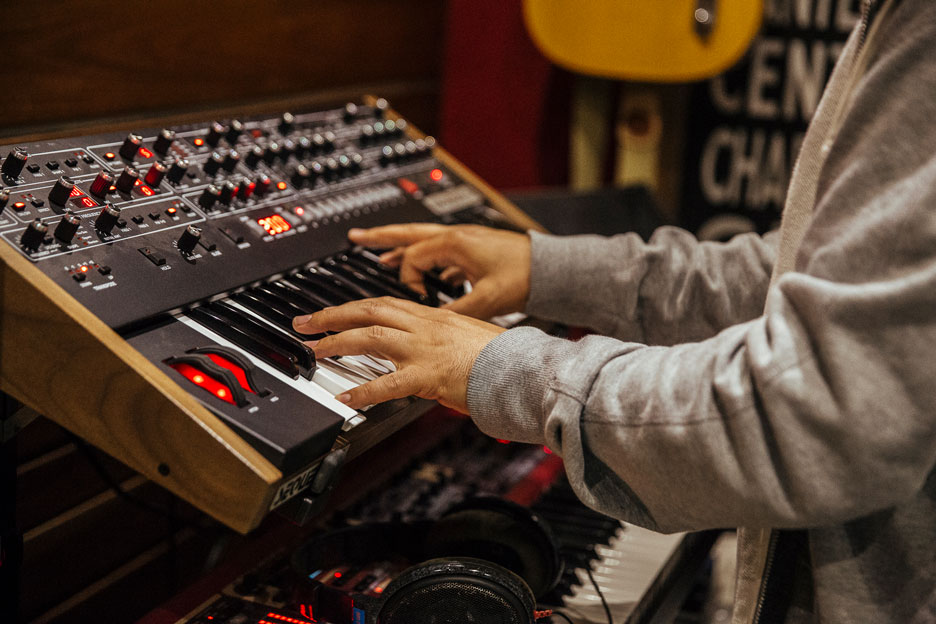
We’ve experimented with synths over the years in both hardware and software worlds, but the Prophet 6 by Sequential Circuits is a piece of gear we’ve completely fallen for. For that matter, anyone who visits the space and plays it wants to steal it.
By going back to basics, they’ve made a synth that always sounds inspiring and is never difficult to use. One knob does one thing, just the way we like it. As you can imagine, it’s made it onto basically every recording that happens here.
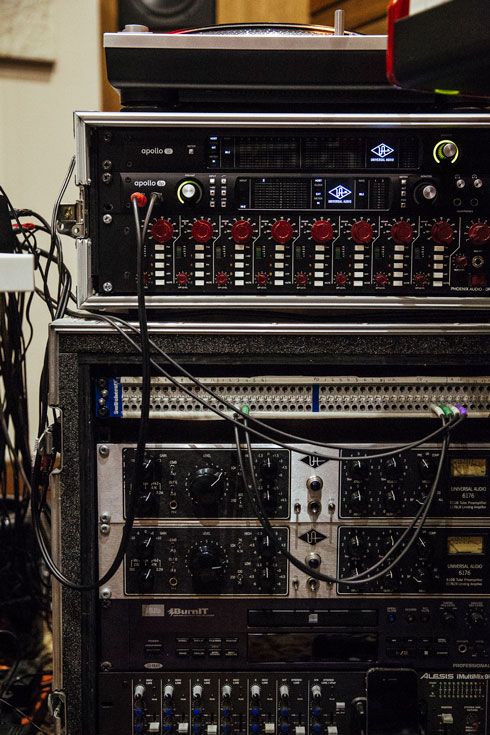
We don’t have a huge amount of outboard at EA, but I like to think we put what we have to good use. When we started doing bigger band sessions, we decided we needed a fair bit of preamp power, fast. Enter the Phoenix DRS-8, which I found to be a musical and intuitive eight-channel preamp from the get-go. It can be really clean, or you can crank it for some real attitude.
The Universal Audio 6176s have been with us since the beginning and have a special place in our hearts. The pres sound great, with a slight treble boost to balance the warmth from the tubes, and the compressor does wonders on an unpredictably dynamic vocal, drum overheads, and even acoustic guitars.
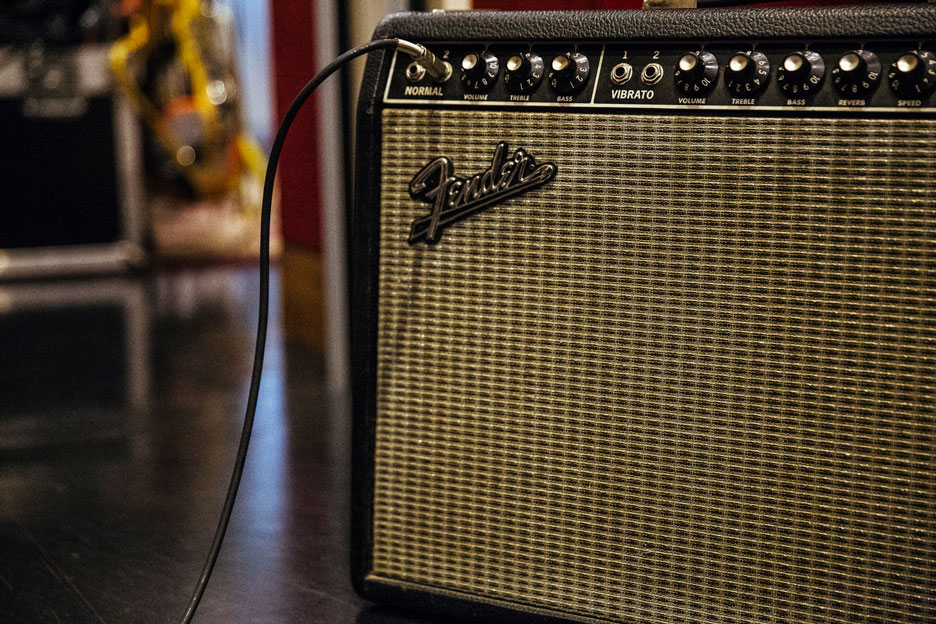
We’ve got a small selection of characterful amps for guitar tones at the studio. Our Fender Vibro Champ is idiosyncratic with warbly vibrato. The original ‘65 Fender Deluxe Reverb is an old fave, and—being slightly elderly—a tad unpredictable.
But the Richards custom amp from boutique amp- and pedal-maker Ivan Richards is without a doubt a session workhorse. It’s so easy to dial in brilliant tones on this beast, and Ivan’s even sent us a few of his equally amazing pedals as well. Legend!
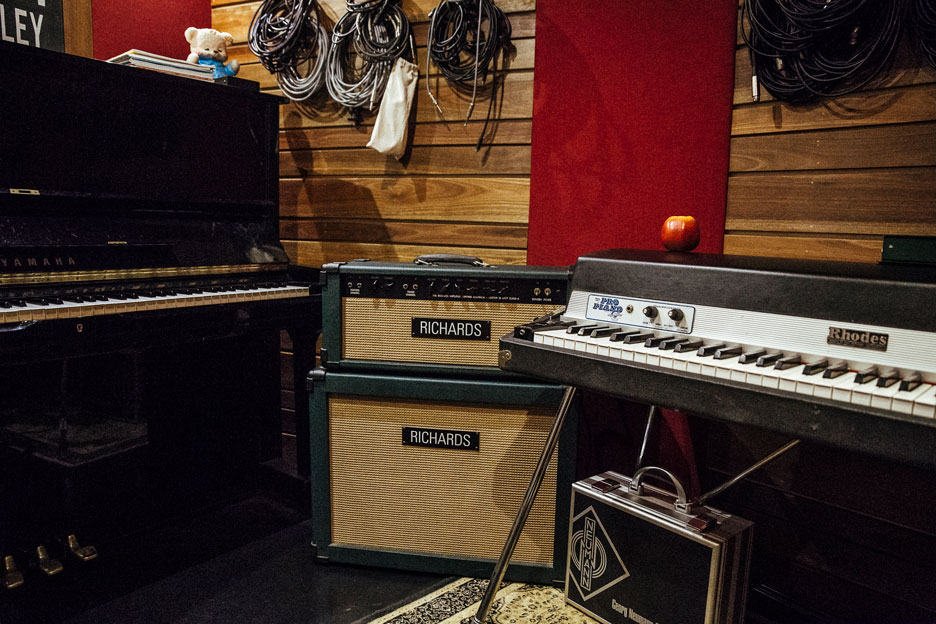
The Fender Rhodes and Yamaha U3 take pride of place in the Stable, and it wouldn’t be the same without them (in fact, we probably couldn’t move the piano out of the room if we wanted to). The Rhodes was gifted to Radi by his accountant, of all people, who was a gigging musician in Sydney and didn’t use it anymore. After some restoration love, it’s graced many a song with its chimey magic.
The U3 wasn’t exactly free, but it was still a bargain. There was a glut of these uprights on the Japanese market until some enterprising folk decided to sell them abroad for much cheaper than they’re actually worth (do some research on the “grey market” for more details). It’s on the big side for an upright and sounds mighty when you strip off the soundboard.
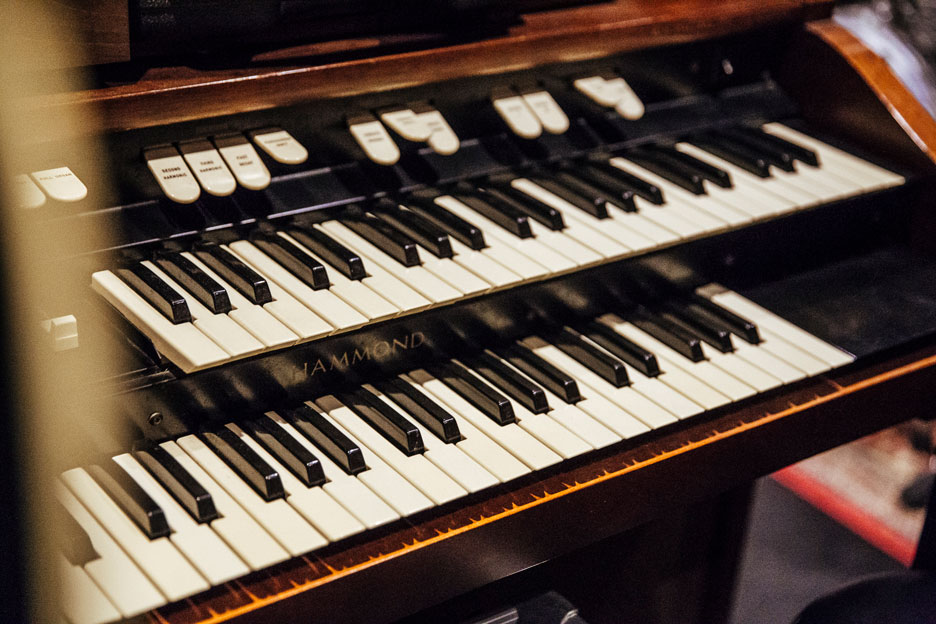
Step through to the Garden live room, and you’ll see the Hammond A-100. Like the Rhodes and the upright, this monolith would have to be broken down and rebuilt if it’s ever to leave the studio. No joke—it actually caught on fire once. It was left on a while too long one day, and the oil in the organ lit up, breathing fire like a dragon through the cabinet grill cloth.
This organ can glue just about any arrangement together and ranges from psychedelic to sinister in tone. There’s just something magic about pulling out the upper harmonic stops on this thing. I’m also convinced that the built-in cabinet is part of sound. Notwithstanding the fire hazard, it definitely holds its own in the studio.
When I was looking for a new bass a few years back, I was pining for a hollowbodied sound. Then, when I went to the shop to try a few out, I played this ‘77 Ibanez Precision/Jazz, and I couldn’t leave without buying it. It’s usually locked onto the P-Bass pickup, where it really shines. Every time I’ve visited other studios to play on sessions, every engineer wants to track this bass and this bass only. It’s that good.
We love all of our axes, too, and we’ve a handful of tonal options to cycle through. Our ‘52 reissue Tele offers up plenty of brashness, and on the mellower end of the scale, we’ve got an Epiphone 335. The Steve Earle Signature Martin is one of the best acoustics I’ve ever heard, and the Baby Taylor—complete with gaff repair work from when Radi’s son fell on top of it—is fragile and ethereal. With the Deering banjitar and the Jim Williams ukelele, we have stringy sounds covered.
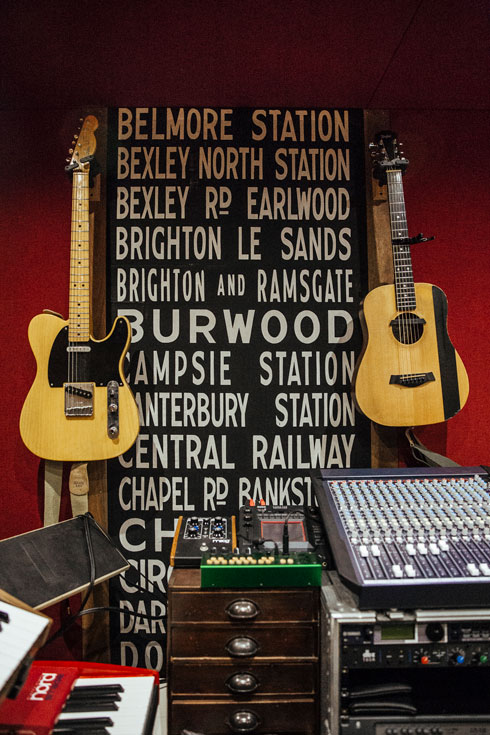
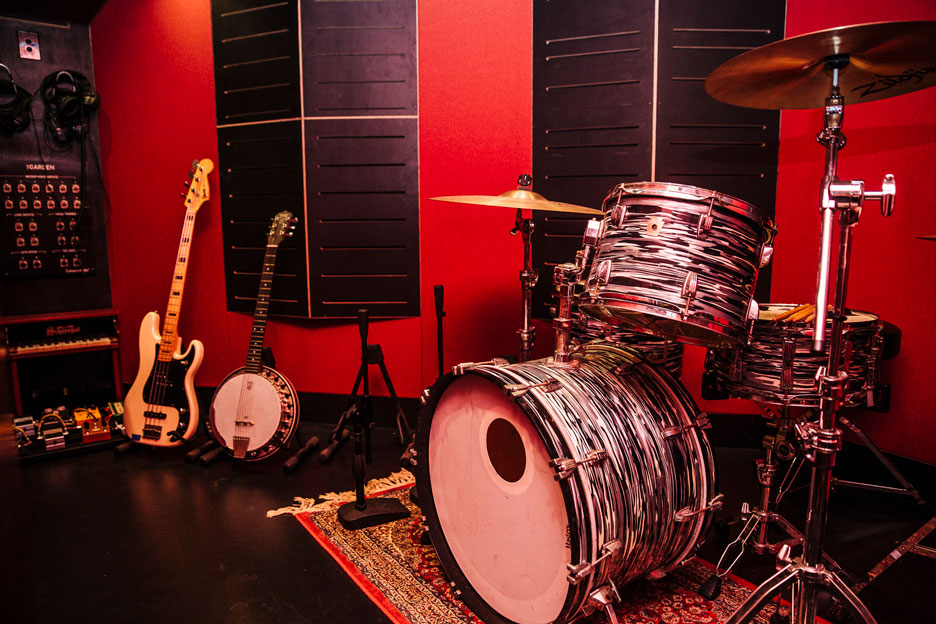
Our Ludwig kit gets a fair workout in most sessions as well. This Ringo Starr reissue definitely has a retro sound, so it’s an acquired taste for drummers who are used to clean and pristine tones. In the Garden room, it has a tight acoustic, so it produces a more muted ‘60s and ‘70s rock sound. The toms can get raucous though and the snare is deep and can slot into many a groove.
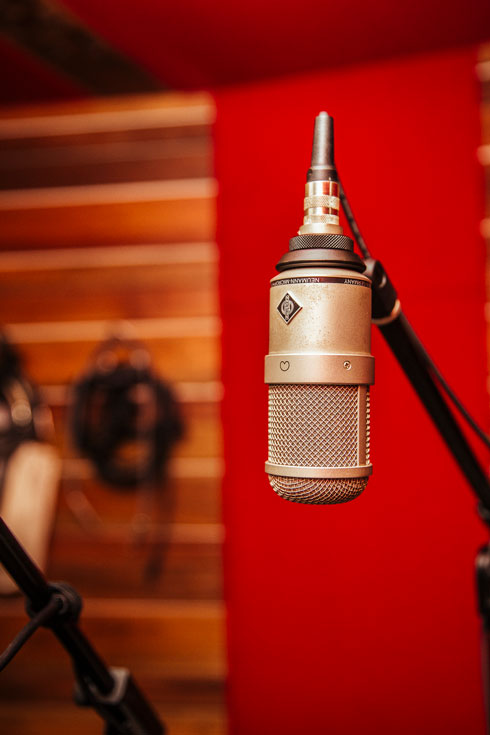
It would take forever to talk through the microphone roster, but there are a couple of standouts. The Neumann M-147 is definitely the go-to for vocals, but has even found itself as far afield as a bass cabinet. It seems to highlight all the best parts of the voice—fragile without being brittle, forward mid-range without ever getting honky.
Less versatile is the Royer 121. But if you can get it right, it’s so right. It’s a great companion for the barky attack of a sax and couples well with a 57 on a guitar cab. My personal favourite is mic’ing a loud acoustic guitar with it. It transforms what could be a mundane sound into something that’s glassy and distinctive.
Photos by Dani Hansen
Have you assembled an awesome music space that you want to show off? Contact us at [email protected]
